Lexus Dashboard Warning Lights & Symbols
Identifying Lexus dashboard lights is important for ensuring the proper functioning and maintenance of your vehicle. Dashboard lights provide visual warnings and alerts about various systems and components in your car. Some common lights include the check engine light, oil pressure light, low battery warning, and tire pressure monitoring system light. Understanding the meaning of each light and taking prompt action is essential to maintaining the health of your Lexus and avoiding potential issues down the road.
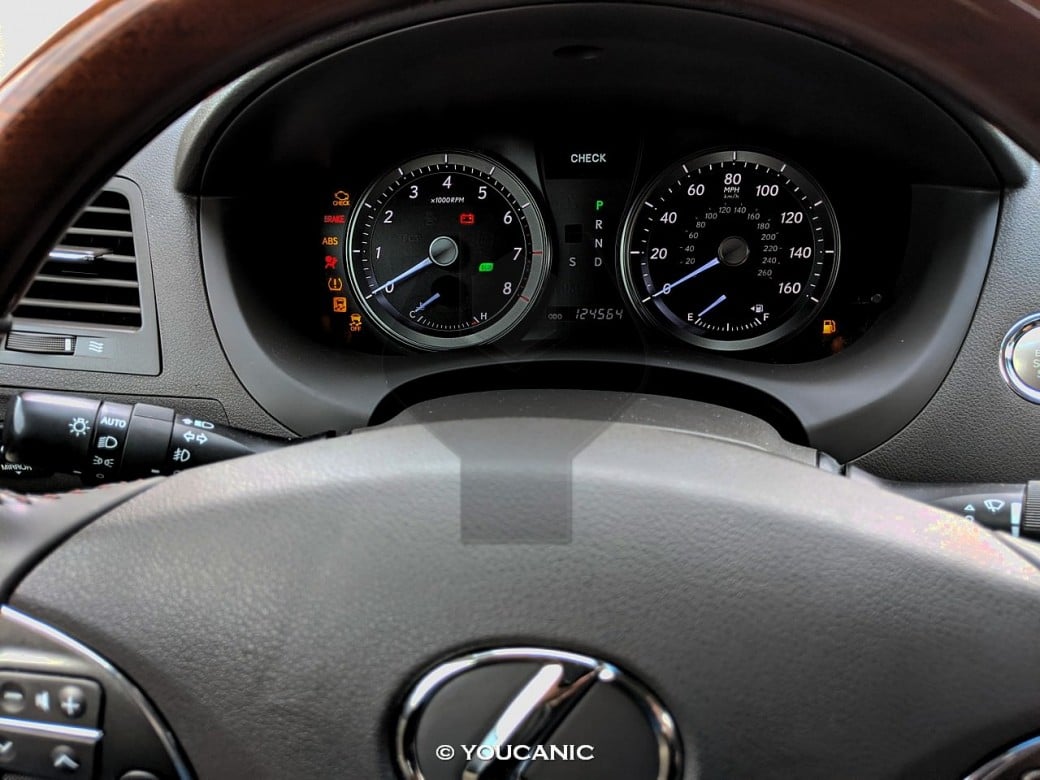
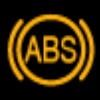
ABS warning light
The ABS warning light indicates the malfunctioning of the ABS and brake assist system. It is usually caused by a faulty ABS wheel speed sensor or a bad clock spring. Traction control will be disabled, as well. Use an ABS Scanner to read fault codes and determine why your Lexus ABS light is on.
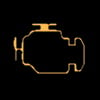
Check Engine CEL | MIL Malfunction Indicator Lamp
If the check engine light comes on, the Onboard Diagnostic System (OBD) has detected a problem with the engine, transmission, or EVAP system.
If the check engine light is always on (solid), you can continue your journey. If the check engine light is flashing, a misfire has been detected in one of the cylinders. Do not operate the vehicle for more than a few minutes if the check engine light is flashing, or you will damage the engine and catalytic converter. The engine may overheat, too, and blow a head gasket. There are hundreds of possibilities. Read fault codes with an OBD-II scanner as possible.

Airbag Light | SRS warning light
When the airbag warning light comes on, it indicates a problem with the Supplement Restraint System, such as a faulty passenger weight sensor. The airbag may not deploy if you get in an accident.
Low voltage, dead battery, faulty passenger sensor, bad clock spring, or damaged wires can be triggered. To diagnose the Lexus airbag light, you will need a diagnostic scanner for the airbag system. Generic OBD-II scanners can not read airbag codes and will not show any fault codes.
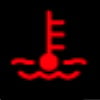
Engine Overheating | High Coolant Temperature
This light is on or flashes to let you know the engine is overheating. Pullover immediately turns off the engine and lets it cool down. Once the engine has cooled down, check the engine coolant level.
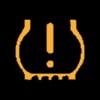
Tire pressure warning light | TPMS
This is the Tire Pressure Monitoring System (TPMS) light. When the light turns on, it is an indication that you have a:
- Flat tire
- Low tire pressure
Stop immediately and check to ensure you don’t have a flat tire. If the tire pressure is low, stop at the lowest gas station to add air. Alternatively, you can get a 12-volt tire inflator and keep it in your car.
When the indicator light turns on after blinking for around 1 minute, there is a malfunction in the tire pressure warning system.

Windshield Washer Fluid
This light means that the windshield washer fluid level is low. When you press the wiper switch, there is no water to spray on the windshield. At your next stop, open the hood, locate the windshield fluid reservoir, and add windshield washer fluid. The windshield washer fluid reservoir cap has the same symbol on top. Do not use plain water.

VSC Light
VSC stands for Vehicle Stability Control. Lexus VSC system helps stabilize the vehicle during emergency maneuvers. It works in conjunction with the ABS and brake system.
Use an All System Lexus Scanner to diagnose the VSC and traction control problems. When the light stays on, it means that there is malfunctioning in:
- TRAC system
- Vehicle Stability Control (VSC) system
- Hill-start assists the control system.
- DRS System, if equipped
- VGRS system, if equipped
Common problems include faulty ABS sensors, clock springs, and pumps. It is possible to continue driving, but do so with caution. Stability control and traction control systems are disabled.

Slip Indicator
If the slip indicator flashes, it means the vehicle is losing traction. Slow down and drive more carefully. If the slip indicator stays on, it means the system is disabled. Check engine lights may also come when there is a problem to remind you that it is time to diagnose your car.

How to check the engine coolant level.
- Stop the vehicle immediately in a safe place.
- Turn off the engine.
- When the engine has cooled down, check the engine coolant level, the radiator reservoir, and the hose for leaks.
- If the fluid level in the reservoir is between MAX and MIN, the level is satisfactory.
- Add the coolant if the level is below the minimum mark.
- Turn on the engine to check if the radiator fan is working.
Monitor engine temperature by looking at the temperature gauge. The needle needs to stay in the middle of the gauge.
Do not drive or keep the engine running if the engine is overheating.
When the Lexus battery light stays on or flashes, there is a problem with the charging system. Depending on the problem, the car may run for another ten to thirty minutes and then shut off. You may have a bad alternator, voltage regulator, damaged wires, loose battery connection, etc.

Engine Oil Light | Oil Pressure
When the oil light comes on, the engine oil pressure is very low, or the engine oil level is low. The oil light may always be on, red or yellow, or may flash. Pull over as soon as it is safe to do so. Turn off the engine, check the oil level, and add oil if needed. Do not operate the vehicle with this light on.

Exclamation mark light | Master warning light
This is a master warning light that does not provide much information on its own. It simply says that there is a fault in the Master Warning System. Typically, it comes on at the same time as at least one other warning light.
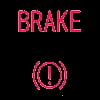
Brake Warning
If the brake light comes on when driving, it means:
-
The brake pads are worn out and need replacement.
-
There is a problem with the brake system.
-
The brake fluid level is low.
-
The parking brakes are not fully released.
Stop the vehicle when it is safe and check the brake fluid level. It can be dangerous and unsafe to drive a vehicle with the brake light on.

Exclamation mark light | Master warning light
This is a master warning light that does not provide much information on its own. It simply says that there is a fault in the Master Warning System. Typically, it comes on at the same time as at least one other warning light.

Brake Light – Yellow
The yellow brake warning light means:
-
There is a problem with the electronic brake system. Also known as the Safety System.
-
There is an issue with the parking brakes.

Pop Up Hood warning light.
When the Pop Up Hood warning light comes on, it shows that the Pop Up Hood system has operated. It usually is activated from an accident or can also happen during hard braking.
- Once the pop-up hood system is operated, it cannot be reused.
- The light also indicates the malfunctioning of the Pop Up Hood system.
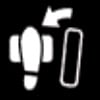
Brake Override System | Drive-Start Control
When there is a buzzer sound, it means:
• Malfunctioning of Brake Override system
• Operation of Drive-Start control
• Malfunctioning of Drive-Start control
• Parking support Brake function is operating (for static objects)
When there is no buzzer sound, it means
• A brake override system is in operation
• Release the accelerator and depress the brake

Electric power steering system
The steering wheel + exclamation light may be yellow or red. It means that the Electric Power Steering (EPS) system is malfunctioning. The vehicle may be hard to steer.

Low fuel level warning light
The warning light indicates that the fuel remaining in the vehicle is approximately three gallons or less.

Driver’s and passenger’s + seat belt
The reminder light warns the driver and/or the front seat passenger to fasten the seat belts. If the front passenger seat is occupied, the seat belt must be fastened.
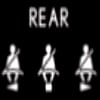
Rear passengers’ seat belt reminder lights
The reminder light warns that the rear passengers have not fastened their seat belts.

Lane tracing Assist (LTA)
The indicator shows that the Lane Tracing Assist (LTA) is malfunctioning.

Intuitive parking assists OFF.
The indicator light coming on means the intuitive parking assist function is malfunctioning. It indicates that the system is unavailable temporarily. This might be due to the sensor being covered with dirt, ice, etc.

Rear Cross-Traffic Alert (RCTA)
If the light comes on, it indicates that the Rear Cross Traffic Alert (RCTA) is malfunctioning or turned off.

Rear Camera Detection (RCD)
When you hear a buzzer sound
• This means that the Rear Camera Detection (RCD) is malfunctioning
When you don’t hear the buzzer sound
• This means that the RCD function can’t be used temporarily. This may be due to a dirty camera, etc.

PKSB OFF
When you hear a buzzer sound:
• It means that the Parking Support Brake (PKSB) system is malfunctioning
When you don’t hear the buzzer
• This indicates that the system is not available temporarily. It can be due to a dirty sensor
PCS warning light
In the case of the buzzer sounds:
• It means that there is a malfunctioning of the Pre-collision System (PCS)
When the buzzer doesn’t sound:
• This means that the system is temporarily not working and requires corrective actions
If the Vehicle Stability Control (VSC) system or PCS is disabled, the PCS warning light will be illuminated

Parking Brake Flashes
The illuminated indicator means that the parking brake system is malfunctioning.

Brake hold operated
If this indicator is on, the Brake hold system is malfunctioning.

Turn Signal Light
This will flash when you use the turn signal lever/switch:
-
Pull down the lever—the left arrow flashes.
-
Push it up, and the right arrow flashes.
Once you make your turn, it will click back in the middle, and the light will turn off. If the indicator flashes fast as usual, one of your bulbs is probably not working. If this occurs, stop as soon as possible and inspect, then replace the not working bulb.

Headlight
This will light up once the headlight switch is turned on. The headlight can be operated manually or automatically, depending on user discretion.

Taillight
This will light up when the tail light is on, together with the daytime running light, side marker lights, parking light, and license plate light.

Headlight High beam
It indicates that the headlights are in high beam mode. All lights mentioned above are on except for the daytime running light.

Auto High Beam(AHB)
Accompanied by the camera sensor located at the windshield, this function assesses the vehicle’s lights’ brightness ahead. It automatically turns the high beam on and off as needed.

Pre-Collision System (PCS) Warning Light
Pre Collision System is a feature to avoid severe damage to your vehicle. The system is automatically enabled whenever the ignition is on. If disabled, a message will appear on the multi-information display, and the indicator lights will turn off.
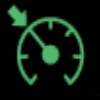
Cruise Control
Cruise Control is a system that automatically controls the speed of your vehicle. Once this light indicator is on, it will maintain your current speed even without stepping on the accelerator pedal. It will turn off once you hit the brakes.
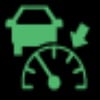
Dynamic Radar Cruise Control
It has the same function as Cruise Control, but this time, it’s from vehicle to vehicle control. It automatically accelerates, decelerates, and stops to match the vehicle’s speed changes in front of you.

Cruise Control “SET”
This will appear when you set the cruise control to the speed you want when pressing the running button. The speed will remain at that speed.
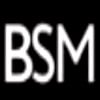
BSM outside rearview mirror (Blind Side Monitor)
This indicator flashes when a fast-approaching vehicle is going to your blind side.
This indicates the feature uses the vehicle bumper’s radar sensors that help the driver move from left to right when driving. When driving, you won’t see some vehicle parts, but this feature notifies the driver if there’s a vehicle in its blind spot.

Intuitive parking assists OFF.
This will appear when the intuitive parking assist is turned off; it will disable the parking sensor when you park.
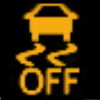
Vehicle Stability Control VSC OFF
VSC is the driving support of the vehicle; it helps stabilize/Control the vehicle when driving, so this will show if the system is off

High Mode
When the High mode indicator is on, the vehicle’s height will increase from its normal stance.

Push Button Start
This will appear on the panel when you start the car. When you press the brake pedal, this will appear, and the engine can be started.

Parking Brake
This will appear when the shift lever is set to Park, which means the Parking Brake functions.

Brake Hold Standby
This keeps the brake applied when the shift is on D, M, or N for a smooth Start roll.

Eco Driving Indicator Light
This indicates that your driving speed is in Economy Fuel Saving Mode.

Low Outside temperature
This Displays the Outside temperature of the Surroundings, a Range of -40°F (-40°C) to 122°F (50°C)

Security
Security or immobilizer system: this light will flash when the engine is turned off, which means the vehicle’s security is on.

Air Bag On/Off (40)
Indicator of Air Bag if it’s armed or not.

AWD | 4×4
When this light stays on, all four wheels are active—also known as all-wheel drive.
If the light flashes, there is a problem, and the AWD can not be activated.

Adaptive Front Lighting AFS Light
AFS stands for the Adaptive Front Lighting System or Automatic Headlight Adjusting. It adjusts the headlights based on the input from the steering wheel. For example, as you make a turn, the headlight projector turns to light up the corner where you are turning.
AFS OFF means there is a problem with the adaptive headlight adjustment system.

Service Reminder
The vehicle is due to regular maintenance, such as oil changes. This does not mean there is a problem, just routine maintenance.

Transmission Temperature
This light means that the automatic transmission may have overheated. This light often comes on if you are towing. Pull over when it is safe and allow the vehicle to cool down.

Automatic Limited Slip Differential (LSD)
A limited-slip differential will automatically lock when it detects wheel slip.

Hybrid Ready
This means all conditions are met, and the hybrid model is ready to activate. Engine auto start/stop-starts to activate when you stop.

EV Mode
The vehicle is operating in electric mode.

EV Operation
The vehicle is operating in electric mode.
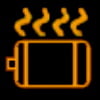
Hybrid Battery Overheat
The lithium-ion cells of the hybrid battery have overheated.

LED Headlamp Out
The headlight is burned out, or the headlight auto-adjust mechanism is faulty.

SPORT Drive Mode
The transmission and engine are operating in sport mode for best performance. Engine output is tuned for maximum output, while the transmission may stay in gear longer before shifting.

CUSTOM Drive
Driving mode customized for the current driver.

Electronically Controlled Transmission Setting
This is the end of Lexus’s warning lights, symbols, and what they mean. In the next section, you will see warning lights on various Lexus instrument clusters.
Lexus Warning Lights by Model
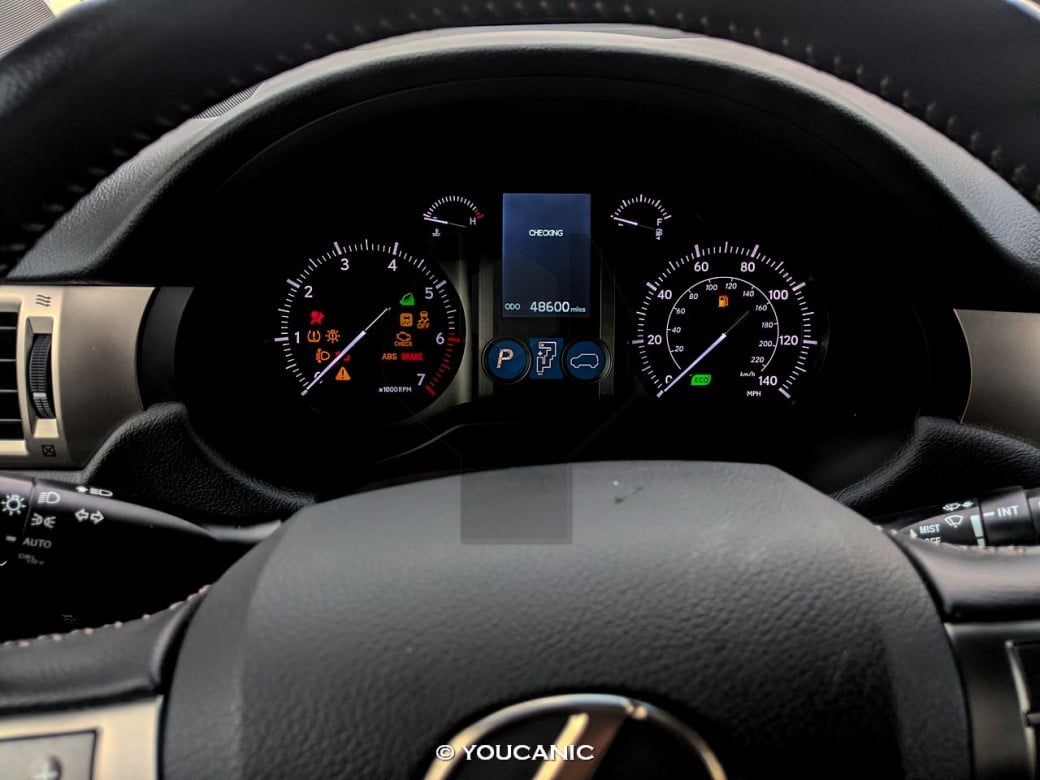

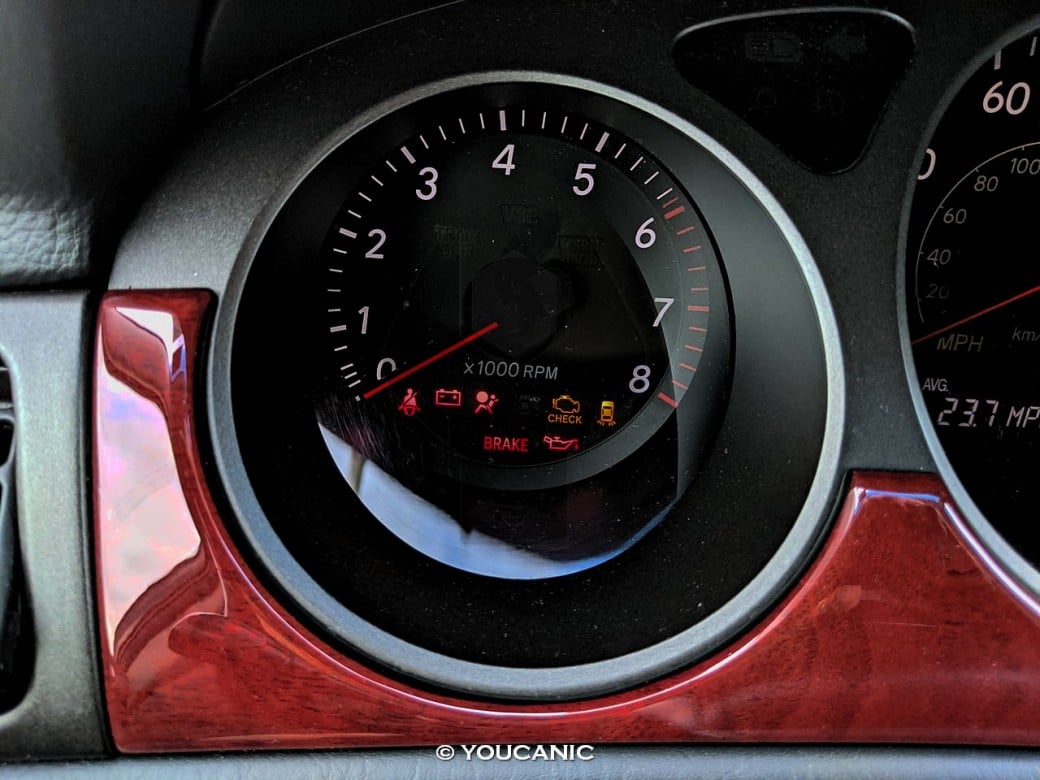
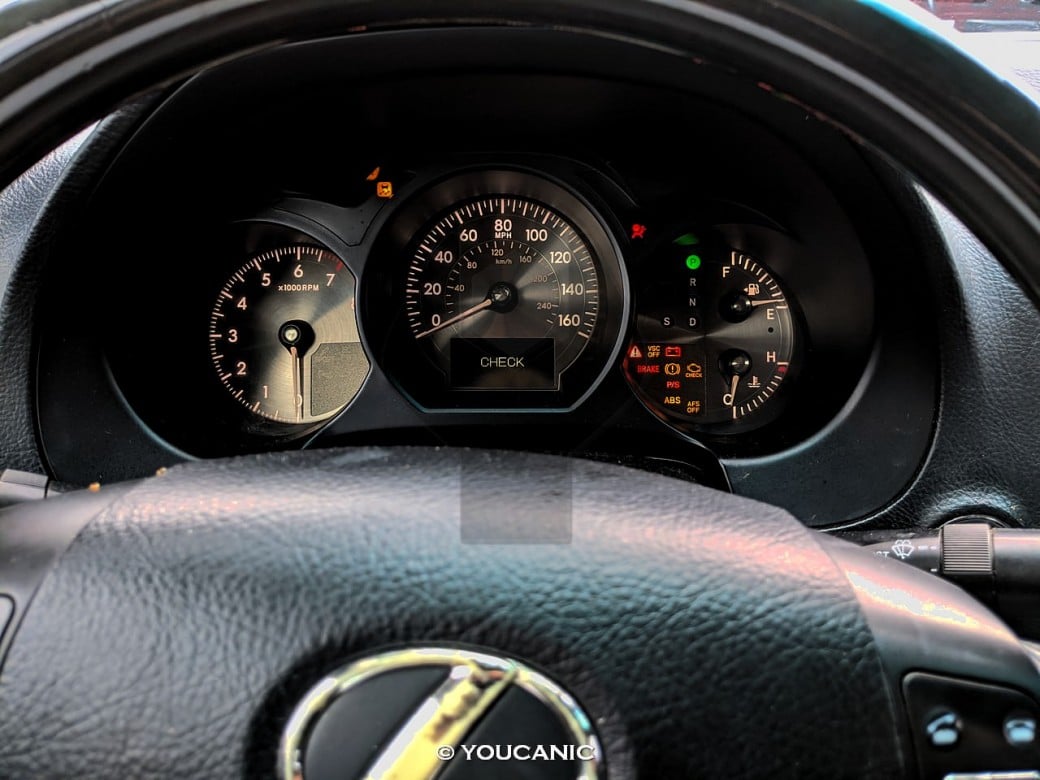
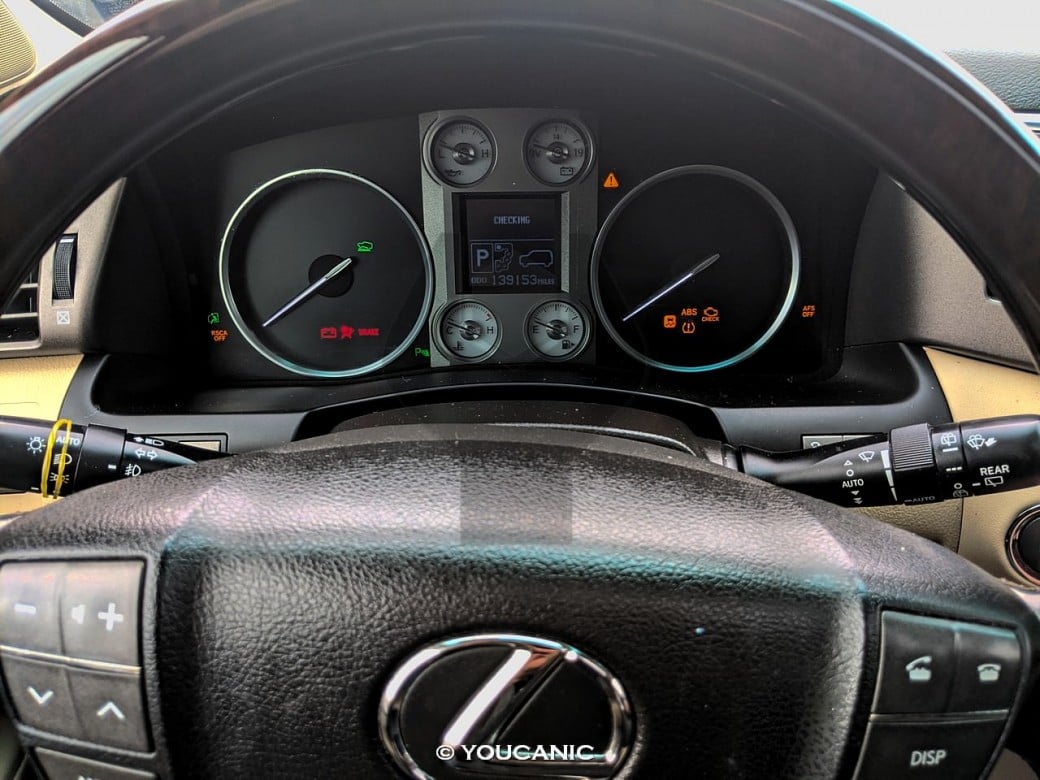
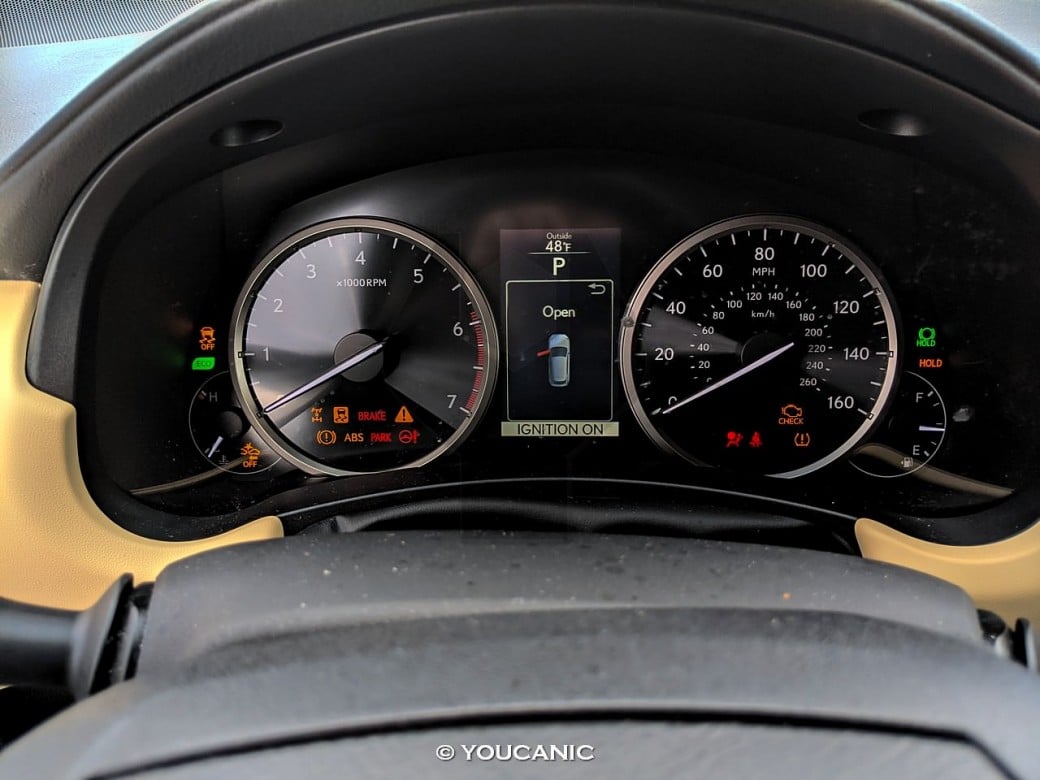
It is possible to diagnose most Lexus warning lights with an All System OBD-II Scanner for Lexus, like the YOUCANIC Full System Scanner. This powerful device can read and clear fault codes from all the systems in your Lexus. The diagnostic port is located under the dashboard on the driver’s side.

We hope you find the Lexus Dashboard Warning Lights and Symbols guide helpful. Check these troubleshooting and repair guides for more help on your Lexus.







